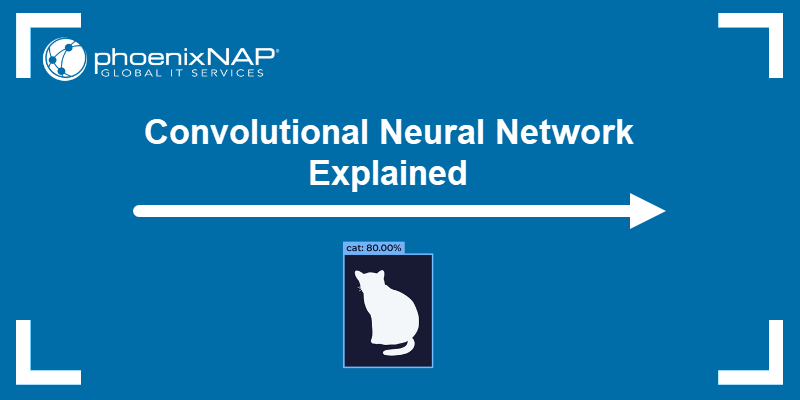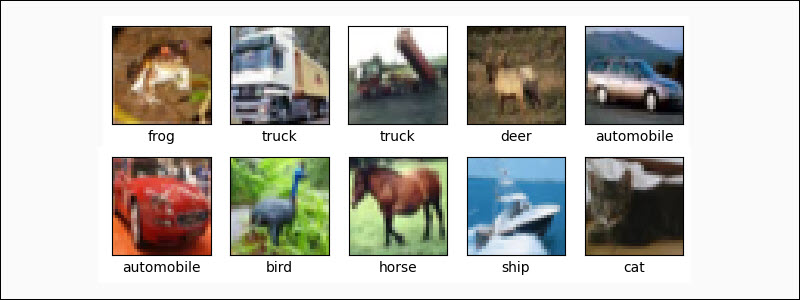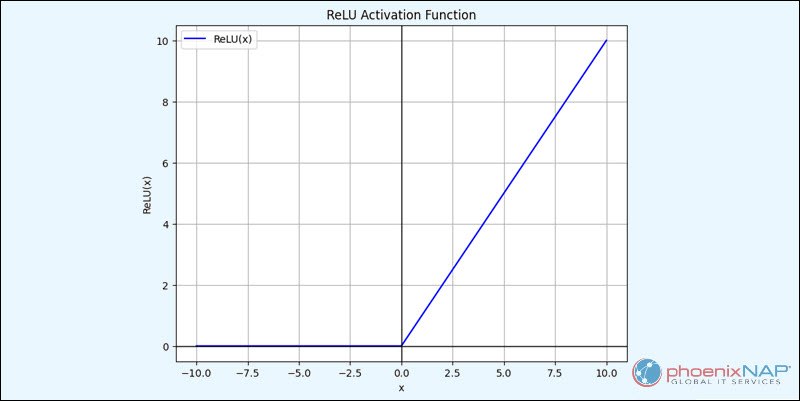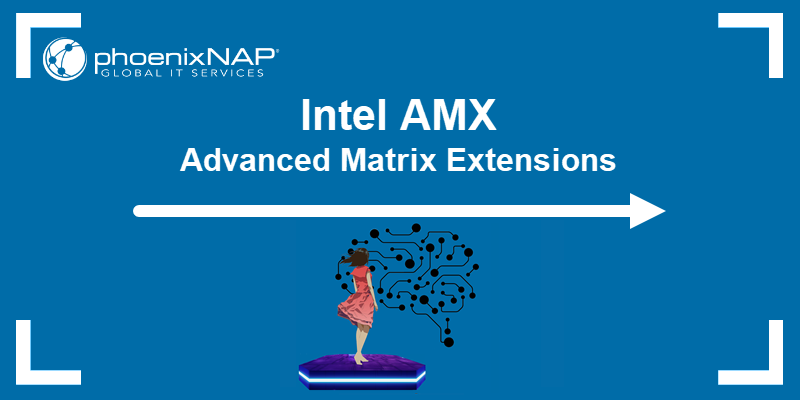Convolutional Neural Networks (CNNs) are a specialized deep learning model. They are designed for and widely used in computer vision tasks. The neural network type is often found in image classification, facial recognition, and object detection.
CNNs are good at processing visual data due to how they are constructed. They imitate how the human brain perceives visual data through layered structures. Knowing how convolutional neural networks work is essential if working with image-based data in AI.
This guide explains what convolutional neural networks are and how they work.

What Is a Convolutional Neural Network (CNN)?
A Convolutional Neural Network (CNN) is an artificial neural network that processes grid-like data, such as 2D images or 3D video frames. They are a subclass of feedforward neural networks (FNNs) and take inspiration from how the human brain's visual cortex works.
Unlike traditional neural networks, manual feature extraction is not necessary. Instead, the model directly learns from raw pixel data, which does not require additional modifications. CNNs use convolutional layers (which is where the name comes from) to simplify and filter images. The process helps detect patterns and features in pixel regions.
Why Are Convolutional Neural Networks Important?
CNNs are important because they apply to a wide range of real-world problems. It revolutionized computer vision and improved the accuracy of the following tasks:
- Image classification. The model labels an image based on its contents. For example, it can recognize objects like vehicles, animals, or foods. This feature is found in many industries, including e-commerce (categorizing products) and social media (automatic tagging or content moderation).

- Object detection. It identifies an object's location and boundaries. Object detection is essential in security surveillance for tracking moving objects in real-time, autonomous vehicles, and facial recognition.

These neural networks can learn and generalize features automatically. For example, CNNs can learn the general shape of a cat and recognize it without being exposed to all different types of cats during the learning phase.
How Does a Convolutional Neural Network Work?
A convolutional neural network has several layers, divided into two general parts. Early layers identify simpler features, while deeper layers identify complex features. These layers apply filters (kernels) that slide over input data to detect specific patterns, such as edges or textures.
For example, when given an image of a cat, the CNN's first layers can detect the general object (edges and contours), while deeper layers recognize specific parts (ears, whiskers) and, later on, the whole shape of a cat.
Convolutional Neural Network Layers
CNNs have several specialized layers that process and interpret visual data together. Every layer has a specific role in extracting and transforming features from the input.
The core layers in a CNN's structure are:
- Convolutional layer.
- Pooling layer.
- Fully connected (dense) layer.
Supporting layers improve learning and performance:
- Normalization layer.
- Activation layer.
- Dropout layer.
- Flatten layer.
Below is a brief overview of all convolutional neural network layers.
Convolutional Layer
The convolutional layer is the core of a CNN. It uses learnable filters (kernels) to scan an input image. There are two hyperparameters related to filters:
- Padding. Adds extra pixels around the edges so the filter can process border areas without shrinking the image too much.

- Stride. Controls how much the filter moves at each step.

Each filter performs a mathematical convolution operation that results in a feature map. These maps highlight patterns, such as lines, textures, or edges. A stack of feature maps is forwarded to the next layer.
Pooling Layer
Pooling layers reduce feature map dimensions to minimize computation and prevent overfitting. The main goal is to produce smaller maps while retaining essential data.
There are two main approaches to pooling:
- Average pooling. Finds the average of a region and smooths out the output.
- Max pooling. Find and keep the maximum value in a region (strong feature).

Fully Connected (Dense) Layer
The fully connected (dense) layers are typically used at the end of a CNN. They connect every neuron to all outputs from the previous layer. The layer is responsible for making a final decision based on the work from previous layers.
The layer can use different activation functions depending on the task:
- Softmax. Converts raw output into a probability distribution with a total sum of 1. It is used in multi-class classification.
- Sigmoid. Converts the output values between 0 and 1. It's commonly used in binary classification or multi-label classification.
The final output from a softmax function forces the model to choose one option:
- Cat: 0.8
- Bird: 0.1
- Dog: 0.1
In this case, the model has 80% confidence that the image is a cat.
For a sigmoid function, the output is different since multiple options can be true at the same time:
- Cat: 1
- Bird: 1
- Dog: 0
The result shows the image contains a cat and a bird, not a dog.
In both cases, the fully connected layer provides an output that is easy to interpret and reflects the model's decision.
Normalization Layer
Normalization layers stabilize and speed up training. They standardize inputs through re-centering and re-scaling to ensure input consistency.
Batch normalization is the most commonly used technique for CNN normalization. It takes a batch of data and does the following:
- Finds the average.
- Measures how spread out the numbers are.
- Re-centers the numbers so they are around 0.
- Scales the batch so it's within a specific range.
The layer prevents the model from going off track during training and simplifies working with deep neural networks.
Activation Layer
The activation layer uses an activation function to model complex patterns. This layer enables the model to learn from new data, making it different from a linear regression algorithm.
Commonly used activation functions include:
- ReLU (Rectified Linear Unit). Converts negative numbers to zero and allows only positive values to pass through.
- Leaky ReLU. Similar to ReLU, it turns negative input values into small numbers.
- Tanh. Rounds all numbers to a value between -1 and 1.
- Sigmoid. Turns all input values into a range between 0 and 1.

ReLU is the most common activation function in a CNN because it speeds up training.
Note: Some frameworks and older models place the normalization layer after the activation function. In practice, normalization before activation shows better results in most cases.
Dropout Layer
Dropout layers randomly deactivate a percentage of neurons during training. It is a regularization technique that helps prevent overfitting. This prevents the network from relying too heavily on specific features, which may include noise, and helps achieve generalization.
During each training step, the dropout layer randomly turns off some percentage of neurons. For example, a dropout rate of 0.3 randomly selects a third (30%) of inputs to zero during training.
The dropout technique forces the network to find alternate paths to solve a problem. It avoids relying heavily on a specific path. The layer is only used during training.
Note: Besides dropout, there are other ways to improve CNN performance. Techniques like weight decay (L2 regularization) and early stopping help prevent overfitting. Hyperparameter tuning adjusts key settings (e.g., learning rate, filter sizes) to optimize CNN performance.
Flatten Layer
The flatten layer prepares data for the final layers. It reshapes 2D feature maps from previous layers (convolution or pooling) into a 1D vector.
The step is essential because the following layers expect a one-dimensional input. For example, if the feature map from the previous layers is a 2x2x4 volume, the flatten layer turns it into a vector with 16 values (2 x 2 x 4 = 16).
Convolutional Neural Network Types
There are different convolutional neural network types. Each type is better at working with specific tasks. Some CNN types include:
- Standard CNN. A CNN with a classic architecture with convolutional, pooling, and fully connected layers. A standard CNN is used for image classification and object detection.
- Fully Convolutional Network (FCN). A CNN that does not have fully connected layers at the end. Instead, it shows a heatmap or pixel-based prediction. An FCN is used for image segmentation.
- Region-Based CNN (R-CNN). Combines CNNs with region proposal algorithms. It is used for object detection in images.
- MobileNet. A CNN that is designed for mobile and edge devices. It's lightweight and uses different convolution techniques to reduce computation.
- ResNet (Residual Network). Allows skipping connections to bypass certain layers to avoid the vanishing gradient problem in deep networks.
Convolutional Neural Network Practical Applications
CNNs are widely used with visual data. The network can learn spatial hierarchies in images, which is helpful for various computer vision tasks. Common applications include:
- Facial recognition. CNNs can identify and verify an individual based on facial features. Facial recognition is found in security systems, such as smartphone or laptop unlocking, access control to places, and surveillance cameras. Law enforcement also uses facial recognition to identify suspects or missing persons.
- Self-driving cars. Autonomous vehicles rely heavily on CNNs to view the environment around them. They process images from cameras and sensors to identify road edges, signs, pedestrians, other vehicles, and obstacles. Self-driving cars can make real-time decisions to follow traffic rules and avoid collisions thanks to CNNs.
- Medical imaging. X-rays, MRIs, and CT scans are all image-type data that CNNs use for disease detection. The neural network can be trained to find patterns in these images and aid doctors in the diagnostic process.
- Inspection. Quality control and inspection in manufacturing uses CNNs to find product defects automatically. Typically, cameras are installed on production lines and scan images in real time. For example, a CNN can detect scratches on a laptop or food irregularities to ensure only high-quality items pass through.
- Style morphing. CNNs can blend the styles of two images to create a new one. The model can take the contents of one image and combine it with the style of another. This application is popular in digital art, social media filters, and gaming graphics.
Benefits and Drawbacks of Convolutional Neural Networks
Convolutional neural networks are essential when working with modern computer vision. They can perform various tasks and have transformed the machine learning field. However, they come with both advantages and disadvantages that can affect their performance in different use cases.
The sections below explore the benefits and drawbacks of CNNs.
Benefits of CNNs
The main benefits of CNNs include the following key advantages:
- Automatic feature extraction. CNNs learn from raw input data. It eliminates the need for additional data manipulation and manual feature engineering.
- High accuracy. The model outperforms traditional image classification, detection, and recognition methods.
- Scalability. CNNs are simple to stack and expand to learn complex features and work with large-scale datasets.
- Translation invariance. If an object's position in an image changes, a CNN can still detect it.
Drawbacks of CNNs
Despite their strengths, convolutional neural networks have limitations that impact their usability and performance:
- Resource intensive. CNNs require powerful hardware (GPUs) and large memory to process and train images.
- Data hungry. The model requires large amounts of labeled data to work and to avoid underfitting.
- Overfitting. CNNs can memorize training data and fail to generalize to new data. They require proper regularization, which requires some expertise.
- Hard to interpret. The network makes decisions and predictions without clearly showing how or why it made that choice. The model works like a black box, which makes troubleshooting difficult.
Conclusion
This guide provided an in-depth overview of convolutional neural networks. They are a cornerstone of modern computer vision and an essential aspect of machine learning.
For further reading, explore deep learning frameworks or learn how to install OpenCV on Ubuntu.



